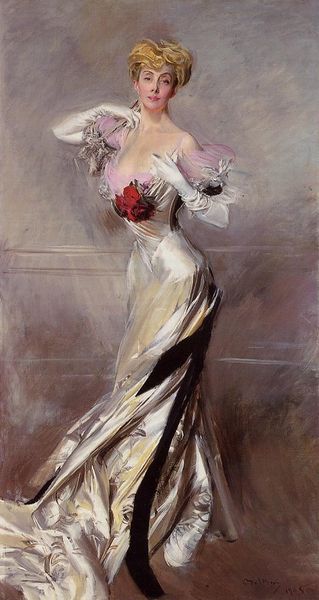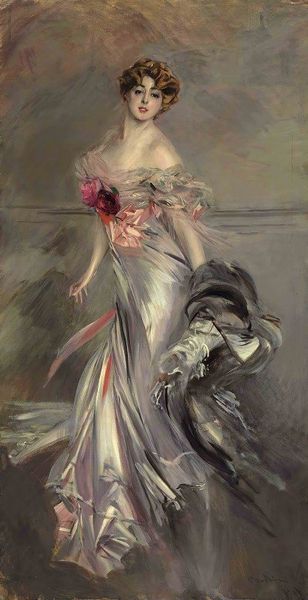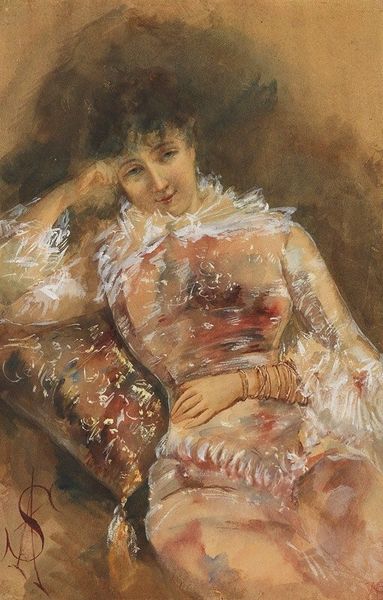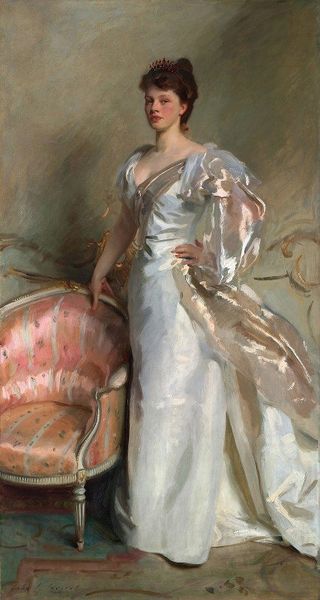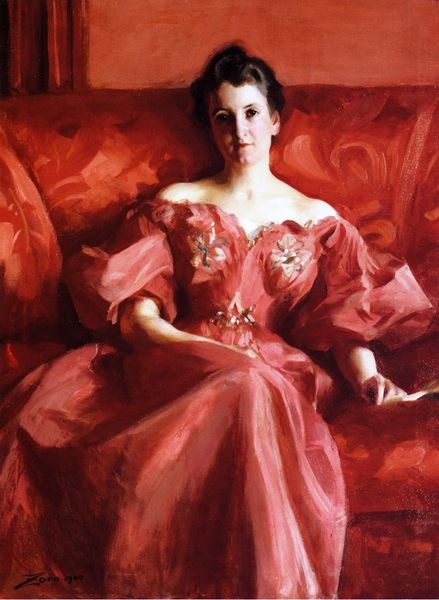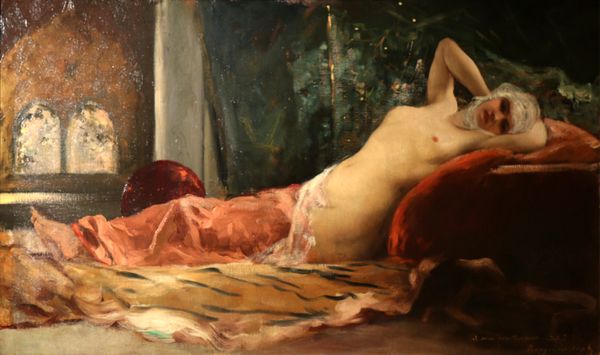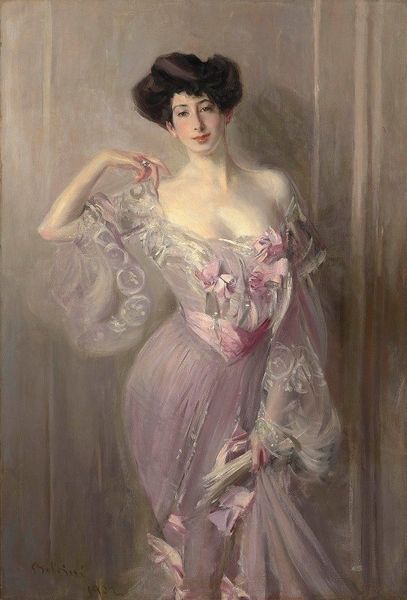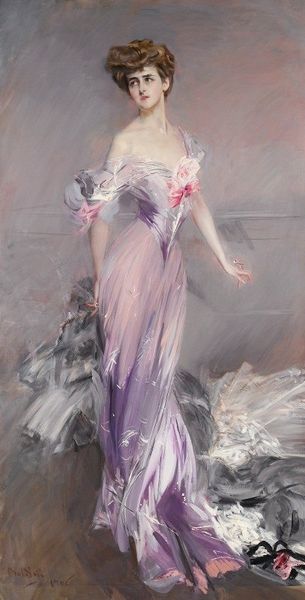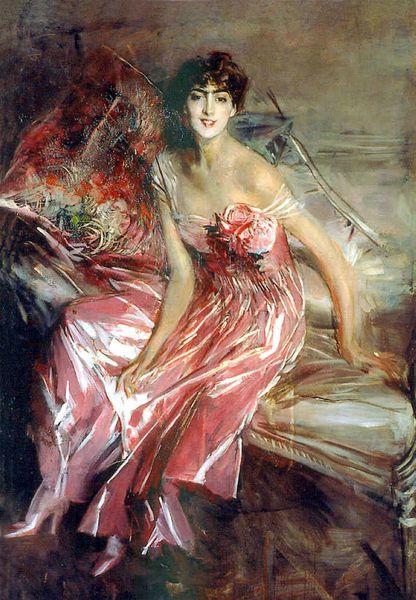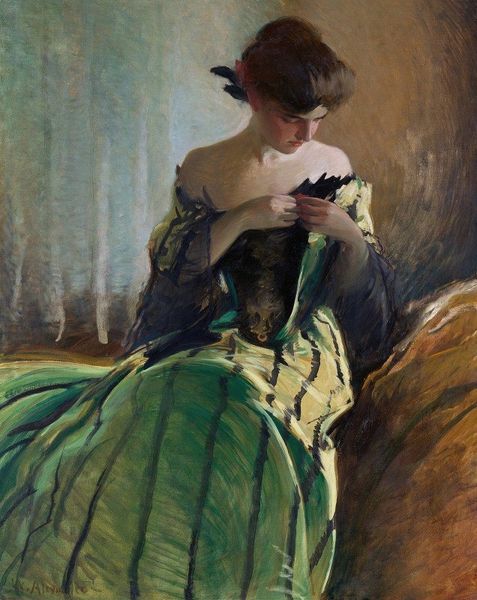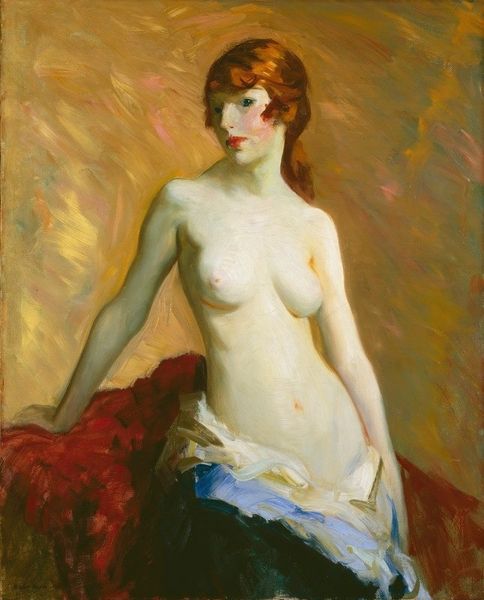
Dimensions: 94 x 180 cm
Copyright: Public domain
Editor: Here we have Giovanni Boldini’s "Portrait of Madame Juillard in Red" from 1912, painted in oil. I am struck by how theatrical the scene feels; there's almost a sense of performativity about her pose. What do you see in this portrait? Curator: That’s a great observation. To me, this painting isn't just about capturing the likeness of Madame Juillard. It's also a representation of the societal expectations placed on women of that era, especially regarding their beauty, their presentation, and their role in the wealthy class. Notice the assertive brushstrokes, a feature common in the works of Boldini; the way the paint itself seems to swirl and dance around her figure contributes to a certain visual excitement. Do you think the brushwork is in contradiction or agreement with the apparent character? Editor: I see what you mean. On the one hand, the brushwork adds this vibrancy, a sense of movement and freedom, but at the same time, there's a clear emphasis on her wealth through the jewels, clothing, and careful posture, seemingly trapping her in society's expectations. It seems both defiant and confined. Curator: Precisely! Boldini’s portrait occupies a unique space, challenging and celebrating the complex identity of the woman that sits before him. This tension speaks volumes about the societal role of women during that time. To fully engage with "Portrait of Madame Juillard in Red", we have to situate the work within a broader context that critiques patriarchal structures, and how portraiture was—and sometimes still is—used to reinforce existing power dynamics. How might that understanding of art impact your generation? Editor: This makes me think about the way women are represented in media today, and how those portrayals impact perceptions and expectations. It's a continuous thread, isn’t it? I never considered how defiant portraiture can be as an active statement against social injustices. Curator: Exactly! By interrogating the social and historical underpinnings of art, we begin to actively engage with art’s enduring relevance.


